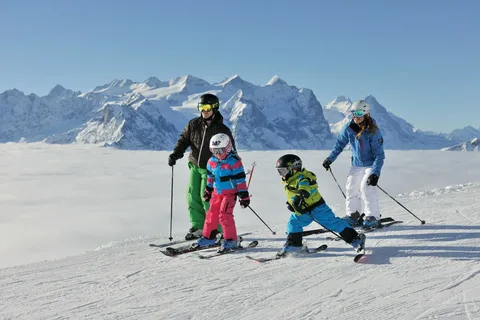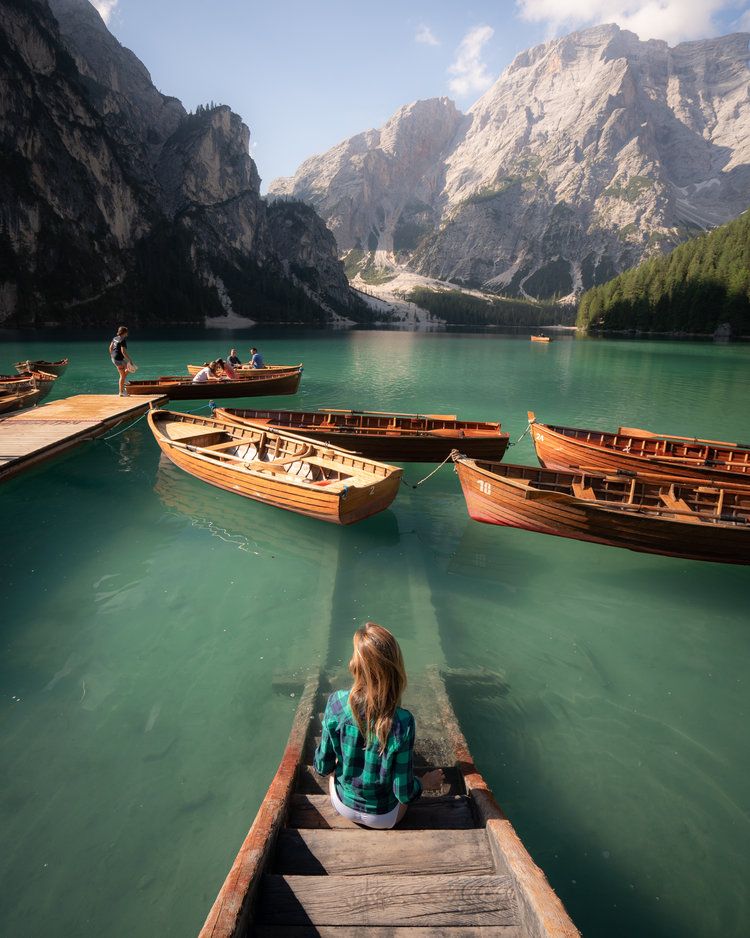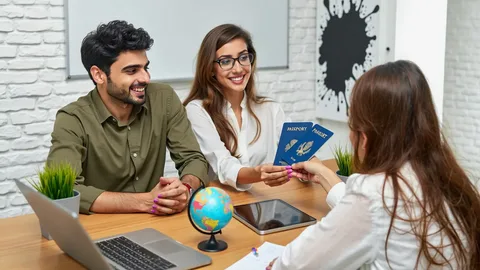Travel & Hospitality
Coolcaytions Escaping the Heat with Cool Destinations

In an era of rising global temperatures and increasingly sweltering summers, the concept of “Coolcaytions” has emerged as a compelling travel trend. Coolcaytions are essentially vacations designed to help individuals and families escape the oppressive heat by visiting cooler, more temperate destinations. This article delves into the allure of Coolcaytions, highlighting various cool destinations around the world, and providing practical advice for planning the perfect heat-escape vacation.
Concept of Coolcaytions
The term “Coolcaytions” is a portmanteau of “cool” and “vacations,” signifying a getaway to a place with a more temperate climate. This concept has gained traction as people seek respite from the heat, whether due to personal comfort, health concerns, or a desire to experience different climates and environments.

Image by Yandex .com
Importance of Climate in Vacation Planning
Climate plays a crucial role in vacation planning. While some travelers seek sunny beaches and tropical climates, others prefer cooler temperatures for a more comfortable and enjoyable experience. Coolcaytions cater to the latter group, offering destinations where the weather is pleasant, and activities are geared towards cooler climates.
Top Cool Destinations for Coolcaytions
Scandinavia, comprising countries like Sweden, Norway, Denmark, and Finland, is a prime destination for Coolcaytions. Known for its stunning natural landscapes, including fjords, forests, and lakes, Scandinavia offers a perfect escape from the heat.: Visit Stockholm, the capital city, with its beautiful archipelago and historic sites. For a more remote experience, explore the Swedish Lapland, where you can witness the Northern Lights and enjoy activities like dog sledding and ice fishing. The fjords of Norway are a must-see. The city of Bergen, surrounded by mountains and fjords, provides a cool climate and picturesque scenery. The Lofoten Islands offer a unique blend of rugged landscapes and cultural experiences.
Copenhagen, with its cool climate and vibrant culture, is an ideal destination. Enjoy the city’s historic sites, modern architecture, and culinary delights.
Finland**: Helsinki, the capital of Finland, offers a cool climate and a rich cultural scene. The Finnish Lapland is another excellent choice, known for its pristine wilderness and winter activities.
Canadian Rockies: A Majestic Escape
The Canadian Rockies, stretching through British Columbia and Alberta, provide a stunning backdrop for a Coolcaytion. With their snow-capped peaks, crystal-clear lakes, and abundant wildlife, the Rockies offer a refreshing escape from the heat. Banff National Park**: Located in Alberta, Banff is renowned for its breathtaking landscapes, including Lake Louise and Moraine Lake. The town of Banff offers a range of accommodations and activities, from hiking and biking to spa treatments and fine dining. Jasper National Park**: Also in Alberta, Jasper is less crowded than Banff but equally beautiful. The park offers opportunities for wildlife viewing, stargazing, and exploring its many trails and lakes.
Swiss Alps A High-Altitude Haven
Switzerland’s Alps are synonymous with cool, crisp air and stunning mountain scenery. Whether you’re interested in skiing, hiking, or simply relaxing in a mountain village, the Swiss Alps provide an ideal setting for a Coolcaytion. Zermatt**: Home to the iconic Matterhorn, Zermatt is a car-free village offering a range of outdoor activities and luxurious accommodations. The summer months provide excellent hiking and climbing opportunities. Interlaken**: Nestled between Lake Thun and Lake Brienz, Interlaken is a hub for adventure sports. The surrounding mountains offer numerous trails and breathtaking views.
Planning Your Coolcaytion
When planning a Coolcaytion, consider factors such as climate, activities, and accessibility. Research the average temperatures and weather patterns of potential destinations to ensure a comfortable experience. Additionally, consider the types of activities you enjoy, whether it’s hiking, skiing, cultural exploration, or simply relaxing.
Timing Your Trip
The timing of your Coolcaytion is crucial. While summer is the peak season for escaping the heat, some cool destinations offer unique experiences in other seasons. For example, visiting the Canadian Rockies in the fall provides stunning foliage, while a winter trip to Scandinavia offers the chance to see the Northern Lights.

Image by Yandex .com
Packing Essentials
Packing for a Coolcaytion requires some specific considerations. Be sure to bring layers, as temperatures can vary significantly, especially in mountainous regions. Include waterproof and windproof clothing, sturdy footwear, and accessories like hats and gloves. Don’t forget essentials such as sunscreen, sunglasses, and a reusable water bottle.
Conclusion
Coolcaytions offer a refreshing alternative to traditional vacations, providing an escape from the heat and an opportunity to explore some of the world’s most beautiful and temperate destinations. Whether you’re drawn to the Nordic charm of Scandinavia, the majestic beauty of the Canadian Rockies, or the high-altitude haven of the Swiss Alps, a Coolcaytion promises a memorable and comfortable travel experience. By carefully selecting your destination, timing your trip, and packing appropriately, you can ensure a successful and enjoyable Coolcaytion.
Jobs and education
IVY Overseas – Leading Study Abroad Consultants in Hyderabad

When it comes to studying abroad, having the right guidance is crucial. IVY Overseas has solidified its position as the leading study abroad consultants in Hyderabad.
Since our inception in 2011, we have been dedicated to helping students turn their dreams of studying internationally into reality.
As AIRC, ICEF, and British Certified consultants, our mission is to provide the community with the right advice to select the perfect destination, university, and program that aligns with their academic needs and career goals.

A Trusted Partner Since 2011
Over the past decade, we have assisted more than 20,000 students, guiding them through the intricate landscape of international education. With destinations including Australia, the USA, the UK, Canada, Ireland, New Zealand, France, Germany, Singapore, and Dubai, we pride ourselves on our extensive knowledge and experience across a variety of educational systems and cultures.
Every student has unique aspirations, and at IVY Overseas, we recognize the significance of studying abroad. It’s not just about education; it’s a pivotal step that shapes both personal and professional futures. Our approach focuses on understanding each student’s ambitions, which allows us to provide personalized advice that maps their journeys effectively.
The Economic Role of Students
The potential of the student community is immense. Talented learners play a vital role in shaping economies across the globe. By pursuing their education abroad, they not only gain knowledge but also contribute positively to their home countries upon returning. At IVY Overseas, we are deeply committed to nurturing this community. We believe that education is a powerful tool that fosters growth and innovation.
Tailored Guidance for Every Student
Our consultancy services go beyond mere advice. We continuously strive to improve our knowledge to help students navigate their academic paths. Our dedicated team takes time to understand the academic requirements and career ambitions of our clients. This personalized approach ensures students are well-informed when it comes to choosing their preferred destination, institution, and program.
Our consultants offer insights into various factors that might influence a student’s choice. We discuss aspects such as course content, university rankings, living conditions, cultural experiences, and post-study work opportunities. The holistic understanding we provide equips students with the knowledge they need to make informed decisions about their futures.
Studying in Diverse Destinations
When exploring study abroad options, students can choose from a plethora of countries. Each destination offers its own unique advantages:
-
Australia and New Zealand: Renowned for their top-notch educational systems and lively cultures, these nations offer a superb atmosphere for international learners, along with chances for employment and studying.
-
United States & Canada: Home to many of the globe’s leading universities, these North American nations provide varied programs and a diverse environment that encourages creativity and innovation.
-
United Kingdom & Ireland: Abundant in history, these locations offer not only excellent educational opportunities but also connections to significant cultural and professional networks.
-
France and Germany: Famous for their technological innovations and business courses, these European countries provide outstanding education in multiple domains, such as arts and sciences.
-
Singapore and Dubai: Both emerging educational centers offer superb infrastructure and an international perspective for learners, particularly in business and technology sectors
The Value of Expert Consultancy
Navigating the complexities of the study abroad landscape can be daunting. At IVY Overseas, we facilitate this journey by providing expert consultancy every step of the way. Our team ensures that each aspect of the process—from application deadlines and visa requirements to accommodation and financial planning—is tracked and managed effectively.
We coach students on the application process, assist in crafting compelling personal statements, and provide interview preparation tips. Moreover, our support extends beyond the application phase; we also guide students in adjusting to their new environments once they arrive at their chosen institutions.
Success Stories: Transforming Dreams into Reality
The success of IVY Overseas is evident in the countless success stories of students who have achieved their academic and career aspirations with our help. Many of our clients have gone on to attend prestigious universities, secure internships, and even launch successful careers after completing their studies abroad.
We celebrate each achievement, as it symbolizes our commitment to shaping futures. Our track record inspires confidence and trust among prospective students and their families.
Your Next Step Toward Global Opportunities
If you are considering studying abroad, choosing the right consultancy can make a world of difference. At IVY Overseas, we offer a unique combination of industry expertise, personalized service, and a genuine desire to help students succeed.
With over a decade of experience and thousands of successful placements, we stand ready to assist you. Explore your options and realize your potential with IVY Overseas.
Conclusion
Embarking on a study abroad journey is a defining moment in a student’s life. With the right support, it can be one of the most enriching experiences, leading to personal growth and academic success. At IVY Overseas, our commitment to nurturing student aspirations ensures that you are never alone on this journey.
Lifestyle
Luxury Villas in Sri Lanka: Beachfront Villas & Royalindigovilla

Sri Lanka has become one of the world’s most sought‑after destinations for travelers seeking a blend of culture, natural beauty, and unmatched hospitality. Among the island’s many charms, the rise of luxury villas Sri Lanka has redefined how visitors experience this tropical paradise.
From tranquil jungle retreats to dramatic cliffside estates, these properties deliver privacy, personalized service, and unforgettable ocean views. Among the most desirable options are those clustered along the pristine southern coastline, where white sand beaches meet the Indian Ocean in a stunning display of blue hues.

In the serene bay of Thalpe, a coastal village just minutes from the historic Galle Fort, you will find the epitome of refined island living. The thalpe villa concept has gained attention for offering exclusive stays that feel like a private home rather than a hotel room. These villas are designed for discerning guests who seek bespoke experiences—whether a secluded honeymoon escape, a family vacation, or an extended wellness retreat.
Why Choose Luxury Villas in Sri Lanka?
What sets luxury villas Sri Lanka apart from conventional hotel stays is the degree of flexibility and personalization available to guests. Each villa typically includes dedicated staff such as private chefs, housekeepers, and concierge services, allowing you to tailor every aspect of your trip. Unlike resort settings with fixed schedules, villa living allows you to set your own rhythm—breakfast on the terrace at sunrise, sunset yoga on the lawn, or a candlelit dinner under the stars.
Many of these properties are strategically located as villas by the sea , offering direct beachfront access or elevated panoramas of the ocean. Imagine waking up to the sound of rolling waves, stepping out onto your private deck, and watching fishing boats drift across the horizon. Whether you plan to swim, surf, or simply relax with a book by the water, staying in a villa by the sea places the beach right at your doorstep.
The Allure of Thalpe Villa Experiences
Thalpe’s gentle bay and sheltered waters make it particularly attractive for families and couples alike. A thalpe villa often features contemporary design with local influences—open‑air living spaces, thatched roofs, natural wood finishes, and seamless transitions between indoor and outdoor areas. Many properties also include private pools, landscaped gardens, and comfortable lounges that encourage communal living.
Despite its peaceful ambiance, Thalpe is only a short drive from Galle, allowing guests to explore the UNESCO‑listed Dutch Fort, boutique shops, art galleries, and fine dining establishments. As a result, travelers can enjoy both quiet relaxation and cultural exploration without long journeys.
Spotlight on Royalindigovilla
One standout among the many options is royalindigovilla, a luxury property that exemplifies the best of coastal living in Sri Lanka. This villa captures both elegance and comfort while providing guests with immersive experiences tailored to their preferences.
Royalindigovilla’s architecture embraces local aesthetics and international standards, making it a perfect choice for those who want refined living without sacrificing authentic island character.
Royalindigovilla’s location as one of the premier villas by the sea ensures unrivaled ocean views, spectacular sunsets, and access to soft sandy beach just steps away. The property is designed to accommodate groups of different sizes, whether you are traveling as a couple, a family, or with friends. Interiors are spacious and thoughtfully arranged, with high ceilings, natural light, and décor that reflects Sri Lanka’s vibrant heritage.
What draws many travelers to royalindigovilla is the level of service and attention to detail. Guests often highlight the villa’s private chef, who prepares meals based on your tastes using fresh local ingredients—from seafood caught the same day to tropical fruits harvested at peak ripeness.
Meanwhile, the team takes care of every logistical detail, from airport transfers to excursions to nearby attractions such as whale watching tours, turtle hatcheries, or tea plantation day trips.
Villas by the Sea: A Growing Trend
The appeal of villas by the sea in Sri Lanka goes beyond scenic beauty. Many travelers are now prioritizing privacy, personalized service, and unique living experiences, all of which villas excel at providing. Unlike traditional beachfront hotels, villas maximize space and flexibility. You can host private celebrations, enjoy al fresco dinners on your terrace, or unwind with a deep soak in your infinity pool while overlooking the sea.
Across the south coast—from Hikkaduwa and Unawatuna to Mirissa and Weligama—villas by the sea are transforming the hospitality landscape. These properties cater to diverse guest expectations, whether it’s minimalist modern design, Balinese‑inspired sanctuaries, or grand estates with multiple bedrooms and entertainment areas.
Planning Your Sri Lanka Villa Getaway
When organizing a trip focused on luxury villas Sri Lanka, consider the following tips to make the most of your stay:
-
Timing Matters: Sri Lanka’s southern coast enjoys the best weather from December to April, making it ideal for beach activities and outdoor living.
-
Customize Your Experience: Work with villa staff or a local travel specialist to build an itinerary that reflects your interests—whether that includes surfing lessons, Ayurvedic spa treatments, cultural tours, or culinary classes.
-
Consider Group Travel: Villas like royalindigovilla are perfect for groups and multigenerational travel, offering shared communal spaces alongside private retreats.
-
Ask About In‑Villa Services: Many properties provide in‑house dining, spa therapists, childcare services, photography sessions, and more. Planning these details ahead of time ensures a seamless experience.
-
Respect the Local Culture: Sri Lanka is rich in history and tradition, and incorporating visits to local temples, markets, and villages can deepen your connection to the destination.
Conclusion
Sri Lanka’s coastline has emerged as one of the most compelling destinations for travelers seeking a blend of luxury, serenity, and authenticity. With an increasing selection of luxury villas Sri Lanka, guests can enjoy private, fully serviced accommodations that elevate every moment of their stay.
In particular, a thalpe villa offers a serene base from which to explore the southern shores, while standout properties like royalindigovilla set the standard for refined oceanfront living.
For those who value space, service, and spectacular scenery, choosing one of the many villas by the sea in Sri Lanka is a decision that transforms a holiday into an unforgettable coastal experience.
Costumer Services
Delta Airlines Customer Service: Your Essential Guide

Flying can be exciting, but let’s be real — travel plans don’t always go smooth. Flights get delayed, seats change, bags go missing, or you just need to fix something on your booking. When that happens, having access to solid Delta Airlines customer service makes a big difference. Delta is one of the largest airlines in the world, and they handle millions of customer requests every year through phone, online tools, and airport staff.
This guide breaks down how Delta Airlines customer service works, how to find the Delta Airlines customer service number, how to reach Delta Airlines 24 hour customer service, and tips to speak to a representative without wasting time.

Delta Airlines Customer Service Phone Support
For most travelers, calling is still the fastest way to fix an issue. The main Delta Airlines customer service number in the United States is:
Many people refer to this line DELTA Airlines or Delta Airlines 1800 customer service, and it connects you to reservations, changes, cancellations, and general support.
You can call directly at Delta Airlines using this number for help with:
- New flight bookings
- Flight changes or cancellations
- Seat upgrades and class changes
- Delayed or canceled flights
- General travel questions
This phone line is part of Delta Airlines 24 hour customer service, meaning you can call anytime, day or night.
Delta Airlines 24 Hour Customer Service Availability
One thing Delta does right is accessibility. Because Delta operates flights across the globe, their customer service is open 24 hours a day, 7 days a week. That means even if your flight gets canceled at midnight or early morning, you don’t have to wait until business hours.
If you’re dealing with urgent issues like:
- Missed connections
- Overnight cancellations
- Same-day flight rebooking
- Weather delays
You can rely on Delta Airlines 24 hour customer service to assist. Calling the Delta Airlines customer service call line late at night sometimes even results in shorter wait times, which is a nice bonus.
How to Speak to a Real Person at Delta Airlines
Automated phone systems can be frustrating, especially when you already feel stressed. If your goal is to Delta Airlines speak to representative, there are a few tricks that help.
Here’s what usually works best:
- Dial
- When the automated system starts, say “representative” or “agent” clearly.
- If prompted to press buttons, try pressing 0 multiple times.
- Stay on the line — sometimes it routes you automatically.
Once connected, explain your situation calmly and clearly. Having your confirmation number ready can speed things up alot.
Delta Airlines Customer Service for Baggage Issues
Lost or delayed baggage can ruin a trip fast. Delta offers dedicated support for baggage problems.
Delta Baggage Service Number:
You should contact Delta right away if:
- Your bag didn’t arrive
- Your luggage was damaged
- You received the wrong bag
In many cases, Delta can track your bag and arrange delivery directly to your hotel or home.
Delta Airlines Refund and Cancellation Support
Refunds are one of the most common reasons travelers contact Delta Airlines customer service. Depending on your ticket type, refunds can be automatic or require agent assistance.
For refund-related help, you can call:
Delta Refund Status Line:
Delta representatives can help with:
- Refund eligibility
- Refund processing times
- Credits vs original payment method
- Cancelled or disrupted flights
Keep in mind that refunds don’t always happen instantly. It can take several business days, sometimes longer depending on your bank.
Delta SkyMiles Customer Service
If you’re a frequent flyer, Delta’s SkyMiles program has its own support team.
SkyMiles Customer Service:
You can contact SkyMiles support for:
- Missing miles
- Account access problems
- Award ticket bookings
- Mileage upgrades
Calling the SkyMiles line often gets faster service if your issue is loyalty-related.
Online Delta Airlines Customer Service Options
Not everyone wants to sit on hold. Delta also provides several online support options that work pretty well for non-urgent issues.
Live Chat
Delta offers live chat support through their official website.
Live chat is useful for quick questions like seat assignments, baggage rules, or checking flight status.
Manage My Trips Online
Many tasks don’t even require talking to support. Through Manage My Trips, you can:
- Change or cancel flights
- Select seats
- Add baggage
- Request upgrades
Delta Mobile App Support
The Fly Delta App is another easy way to manage bookings and contact customer service. It gives you real-time updates and access to support features right from your phone.
Airport Customer Service Counters
Sometimes, the best solution is in-person help. Delta has customer service desks at most major airports. These agents can help with:
- Same-day flight changes
- Missed connections
- Standby options
- Baggage claims
If you’re already at the airport, this can be faster than making a Delta Airlines customer service call.
When You Should Call Delta Airlines Customer Service
Calling works best when the issue is complicated or urgent, such as:
- Flights canceled due to weather
- International travel changes
- Medical or special assistance requests
- Multi-city itinerary problems
In these cases, it’s better to call directly at Delta Airlines instead of using automated tools.
Tips to Get Faster Delta Airlines Customer Service
- Call during early morning or late night hours
- Keep your booking number ready
- Use live chat for basic questions
- Be polite but clear with agents
- Double-check self-service options first
A little prep can save a lot of time, especially during peak travel seasons.
-
Business2 years ago
Cybersecurity Consulting Company SequelNet Provides Critical IT Support Services to Medical Billing Firm, Medical Optimum
-
Business3 years ago
Team Communication Software Transforms Operations at Finance Innovate
-
Business3 years ago
Project Management Tool Transforms Long Island Business
-
Business2 years ago
How Alleviate Poverty Utilized IPPBX’s All-in-One Solution to Transform Lives in New York City
-
health3 years ago
Breast Cancer: The Imperative Role of Mammograms in Screening and Early Detection
-
Sports3 years ago
Unstoppable Collaboration: D.C.’s Citi Open and Silicon Valley Classic Unite to Propel Women’s Tennis to New Heights
-
Art /Entertainment3 years ago
Embracing Renewal: Sizdabedar Celebrations Unite Iranians in New York’s Eisenhower Park
-
Finance3 years ago
The Benefits of Starting a Side Hustle for Financial Freedom






























